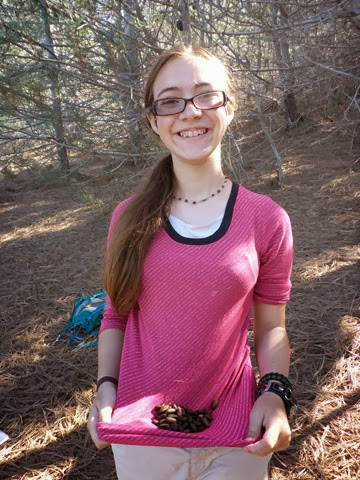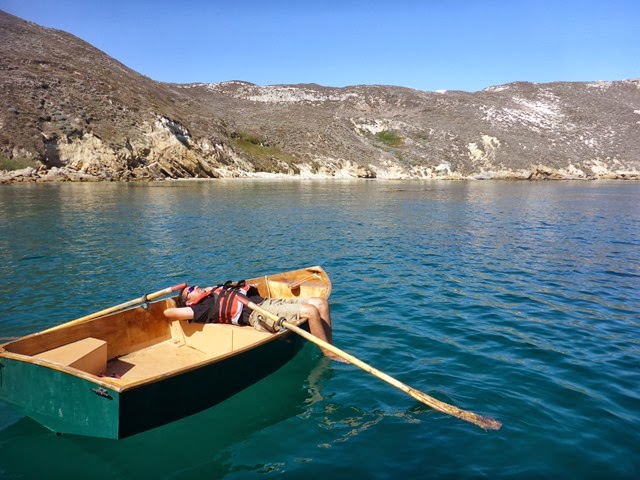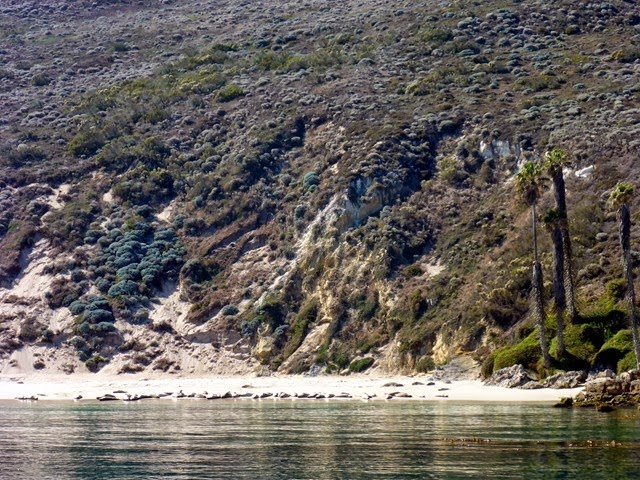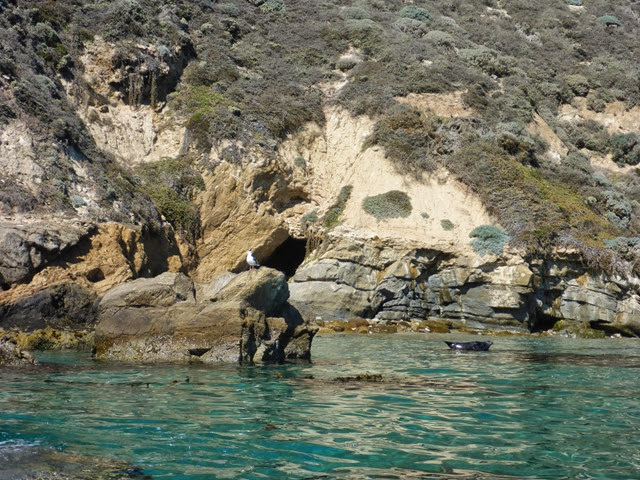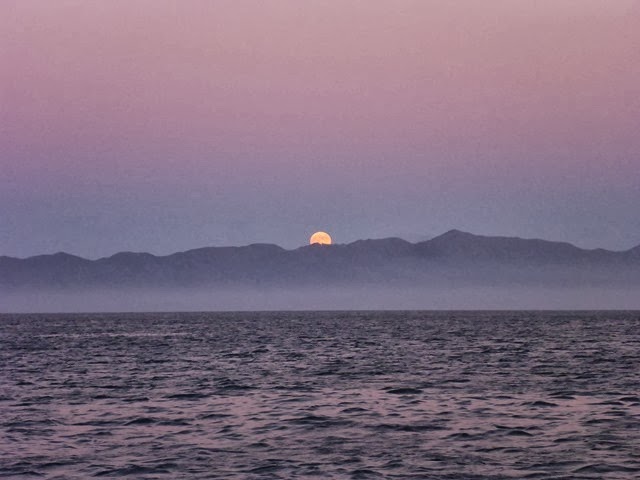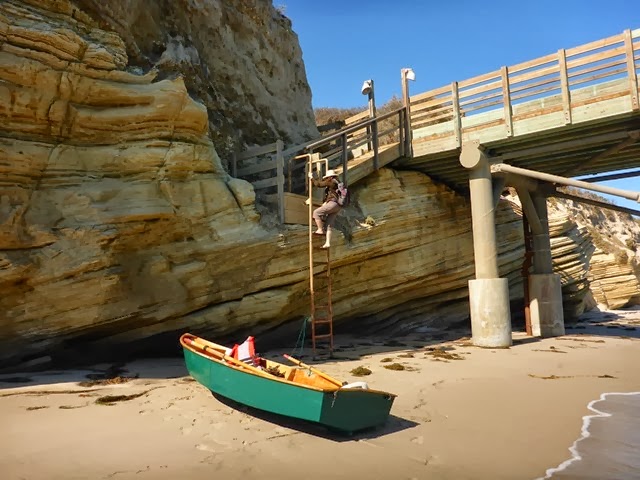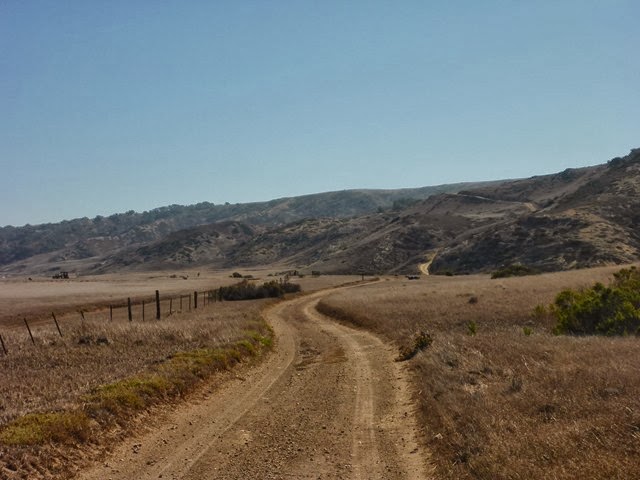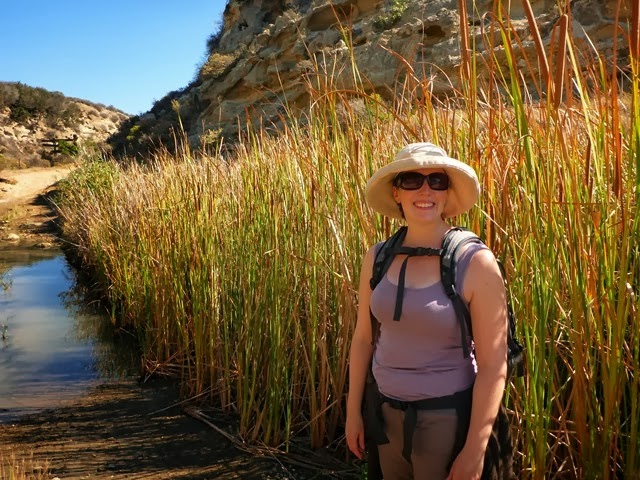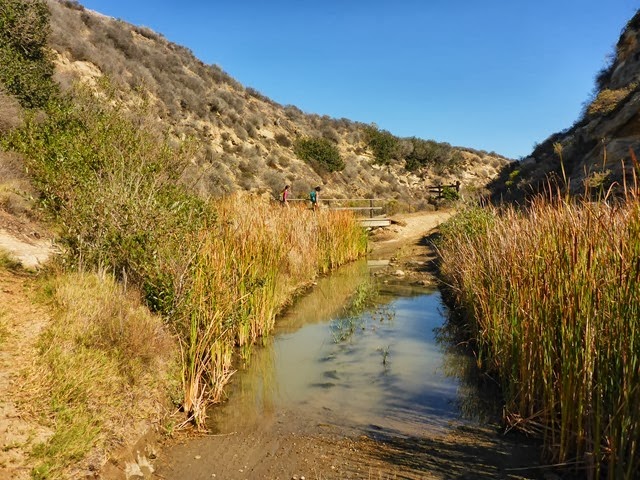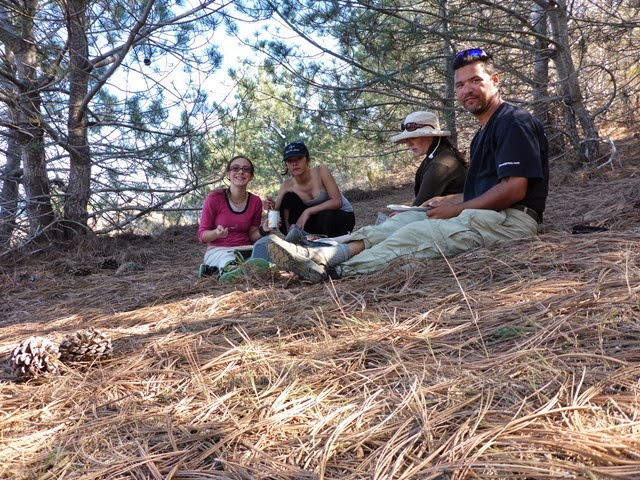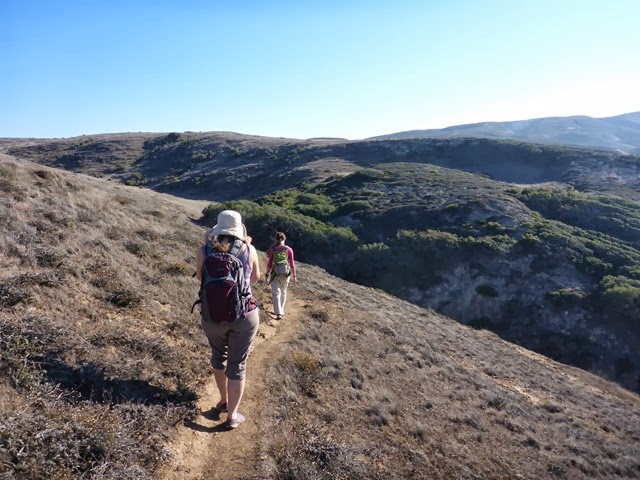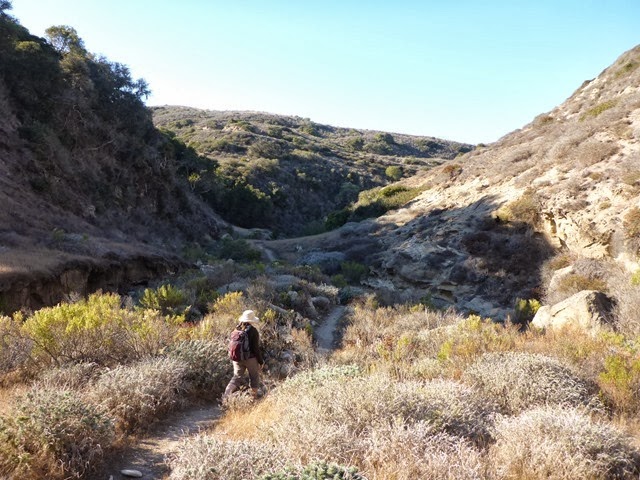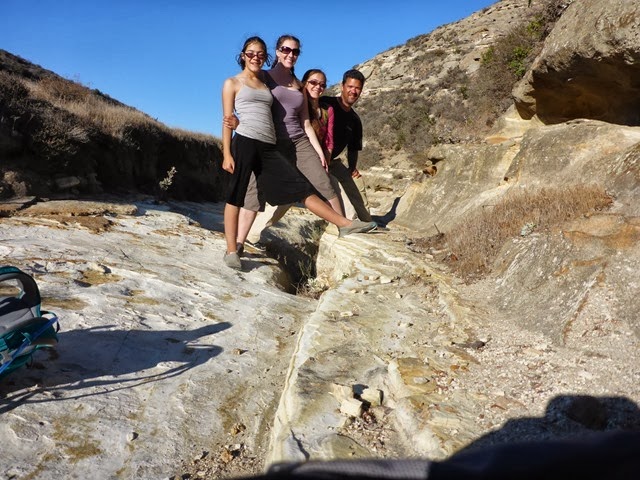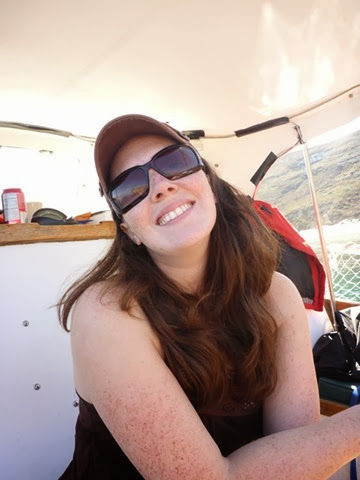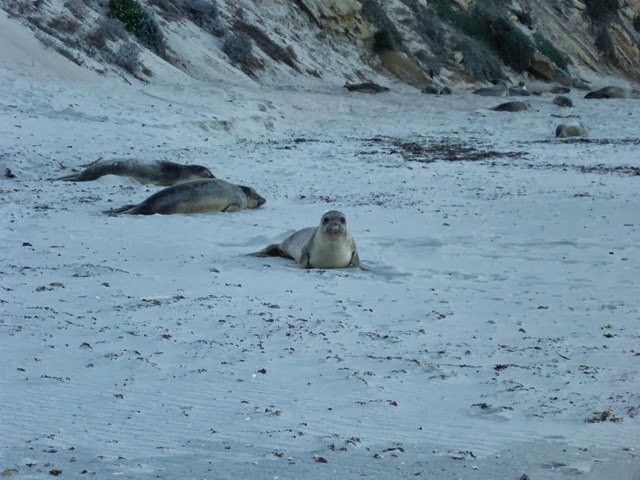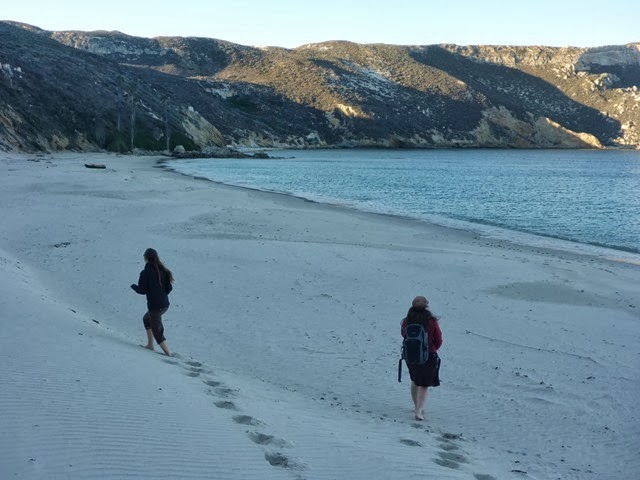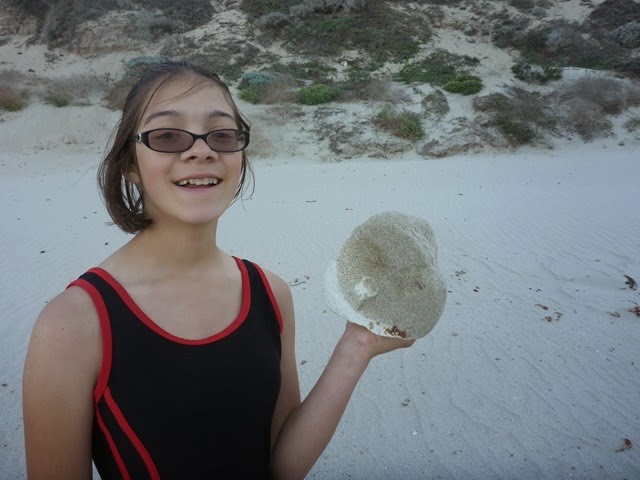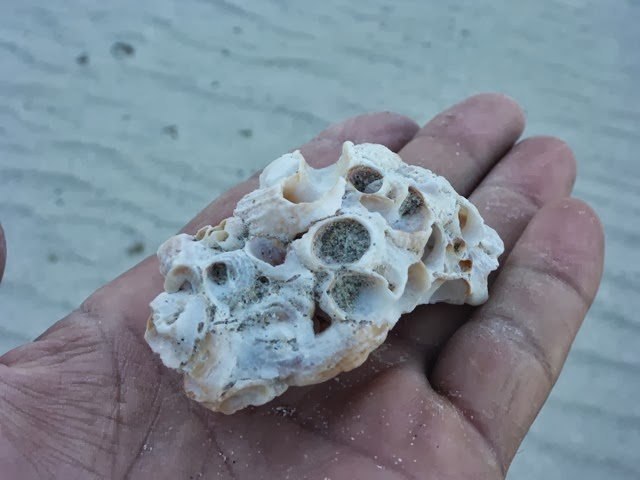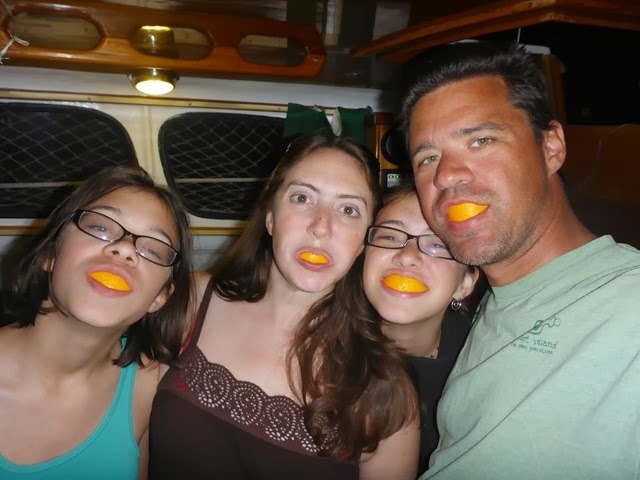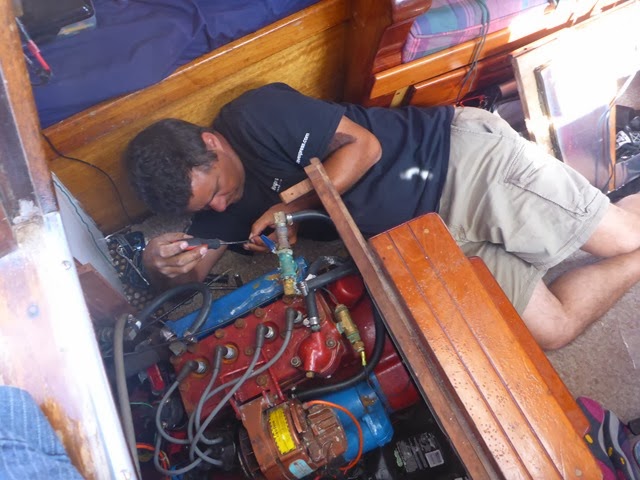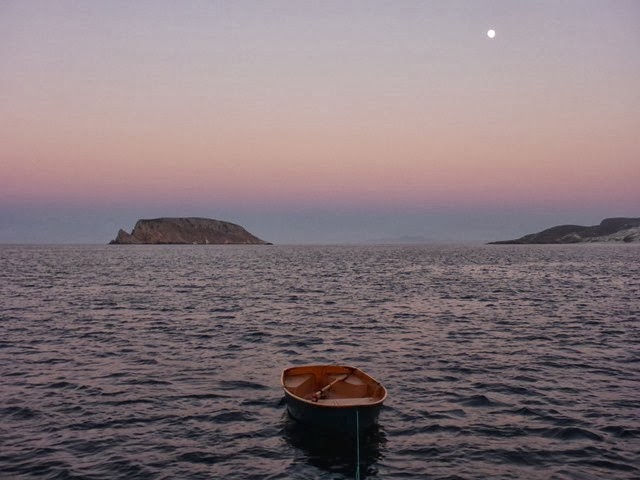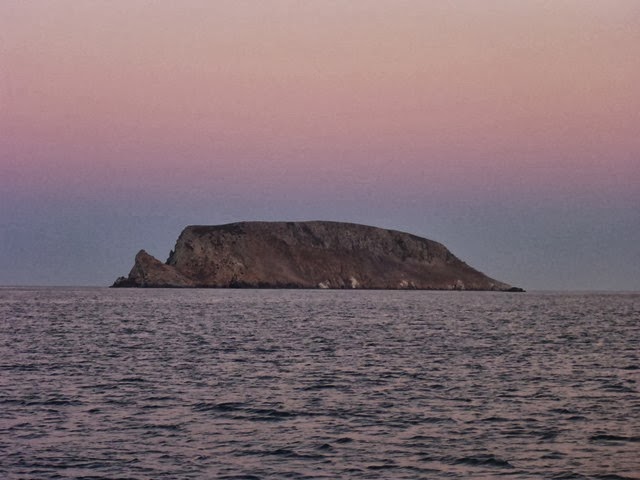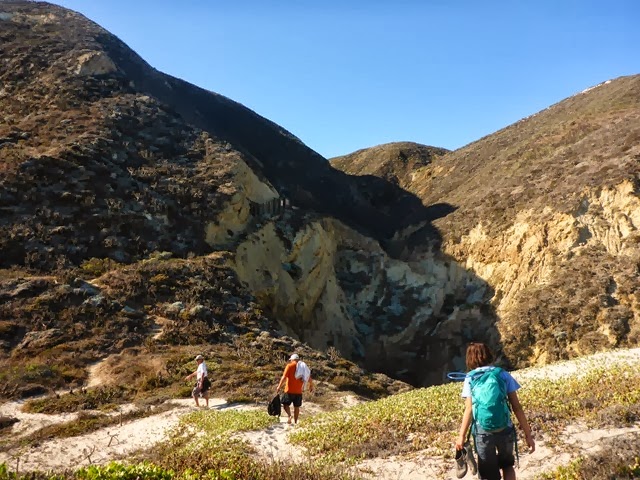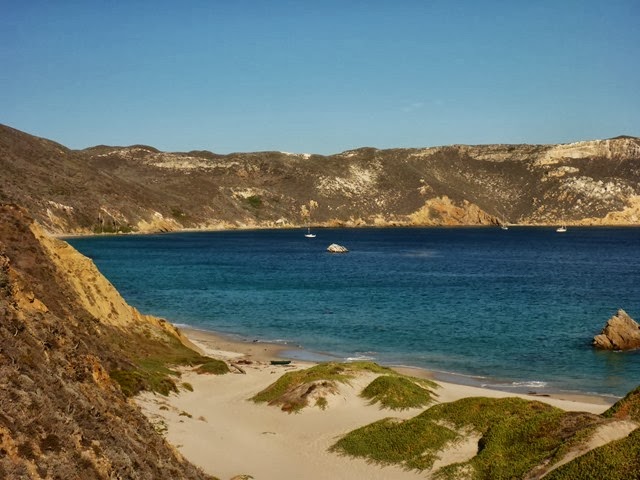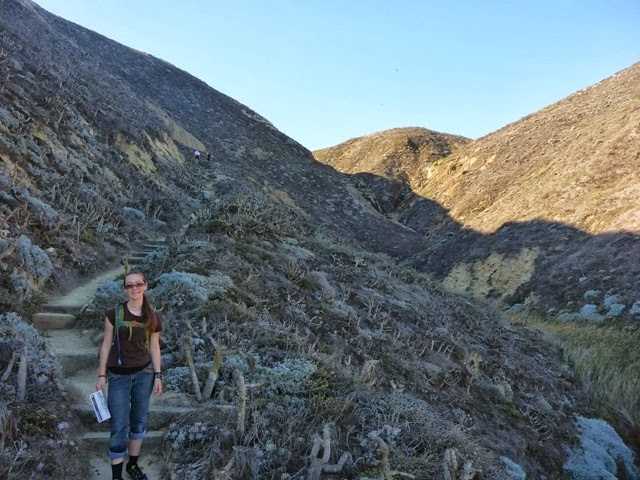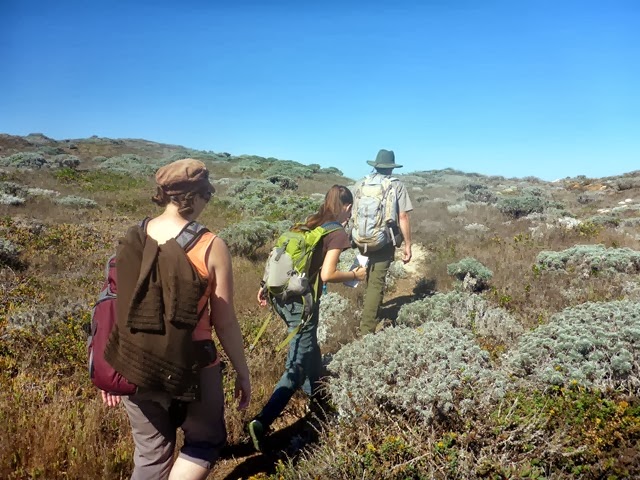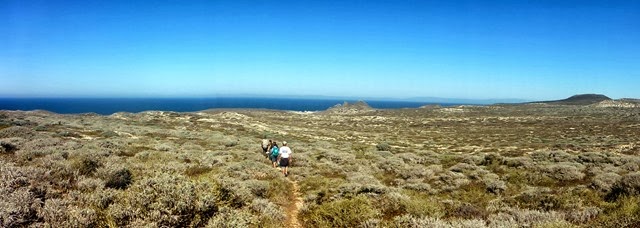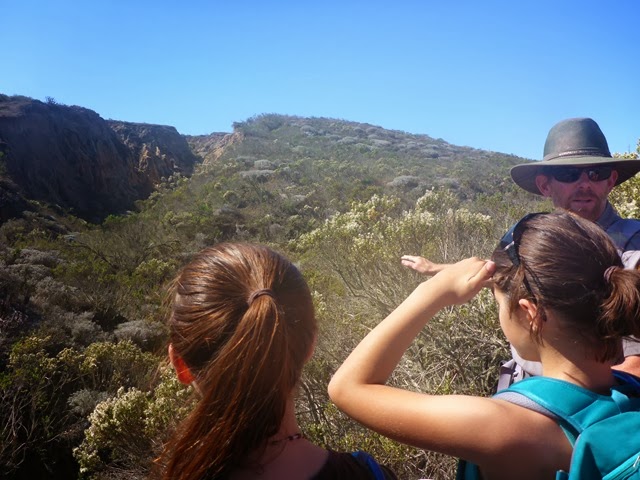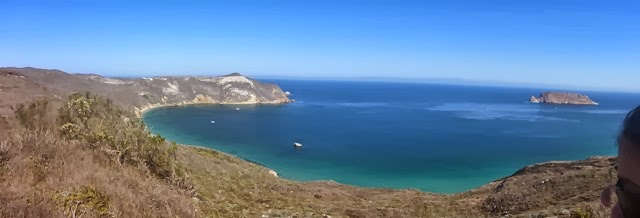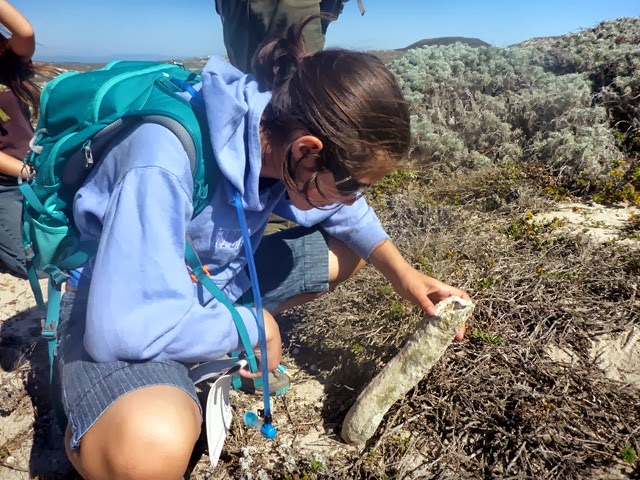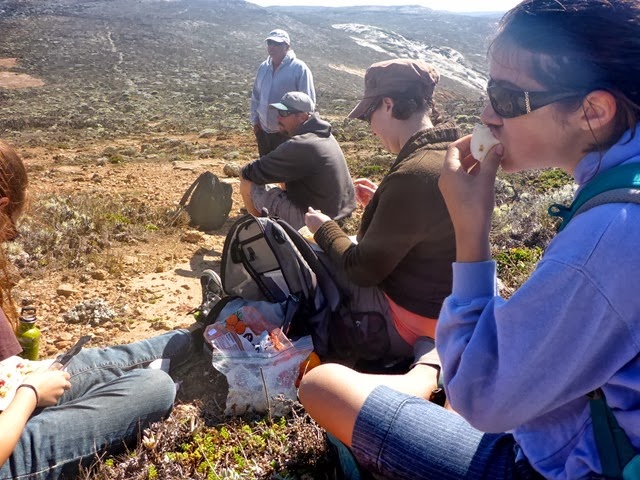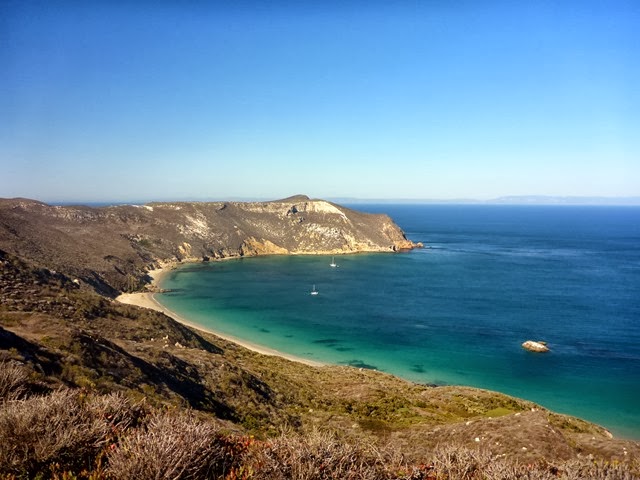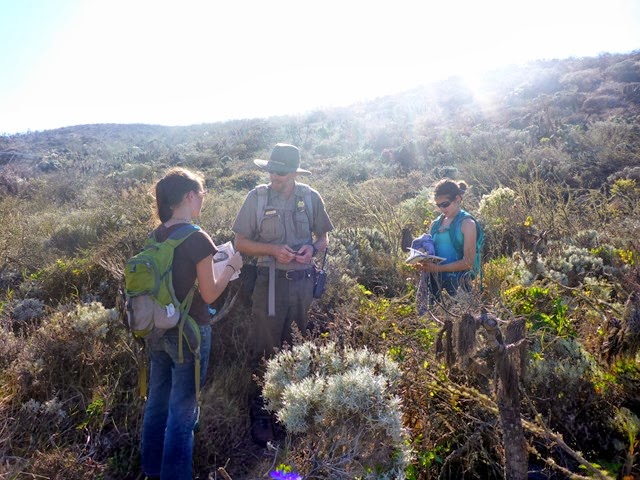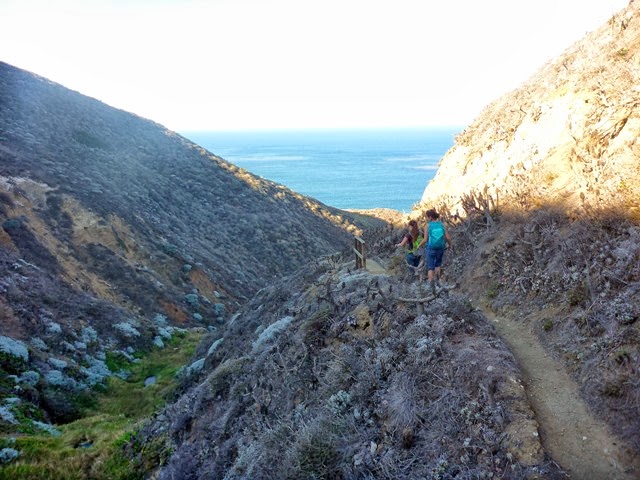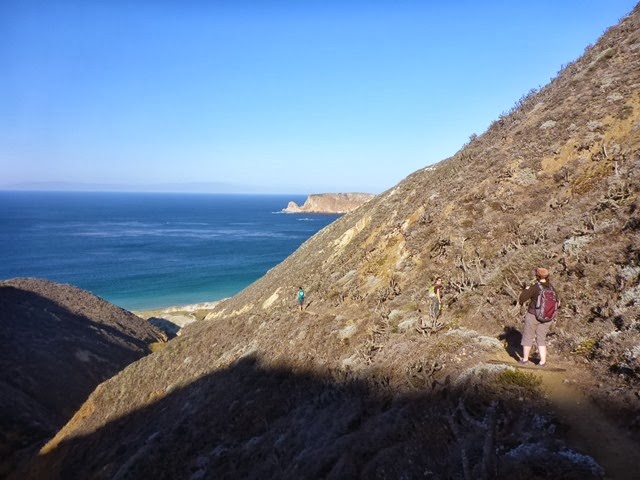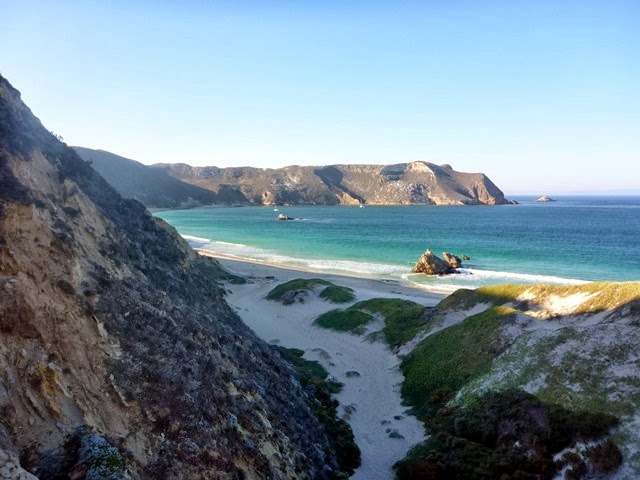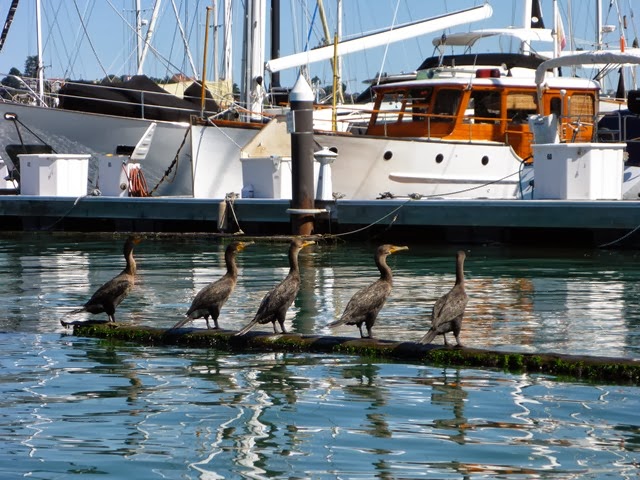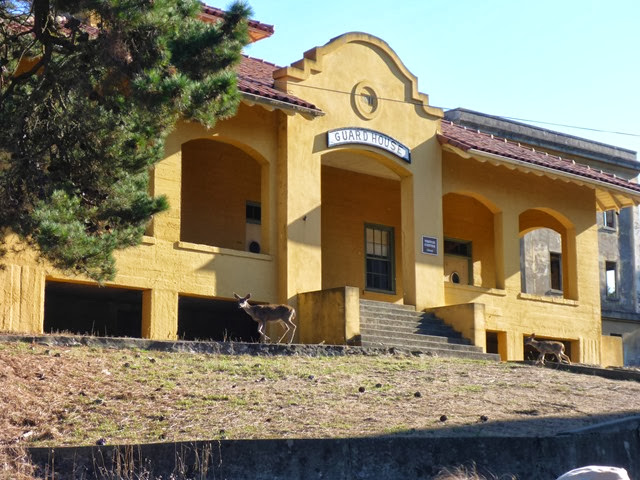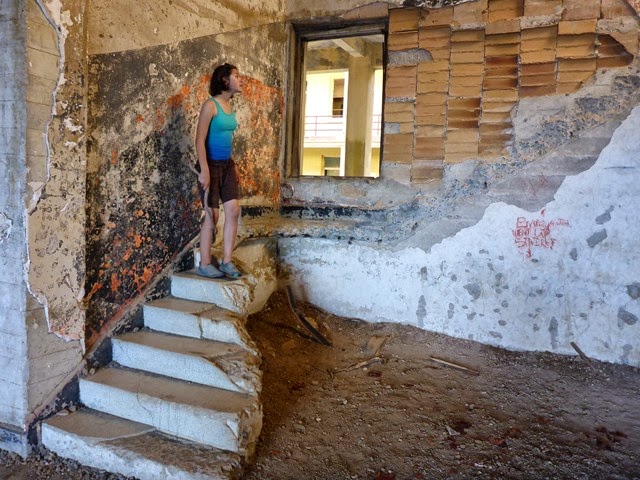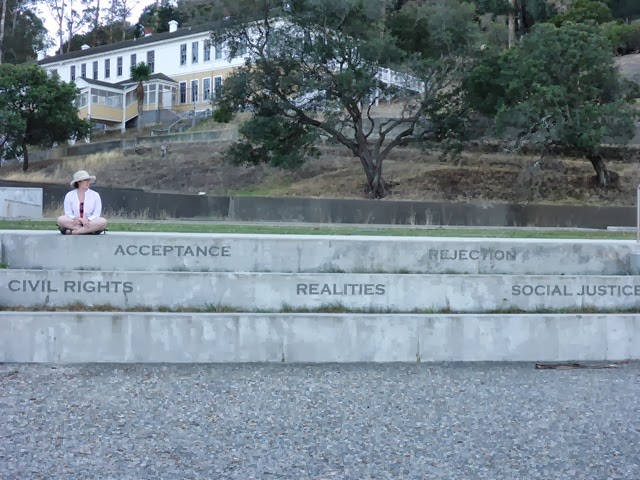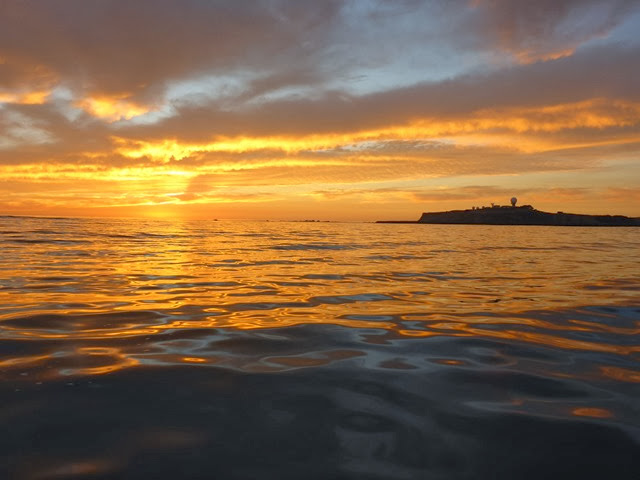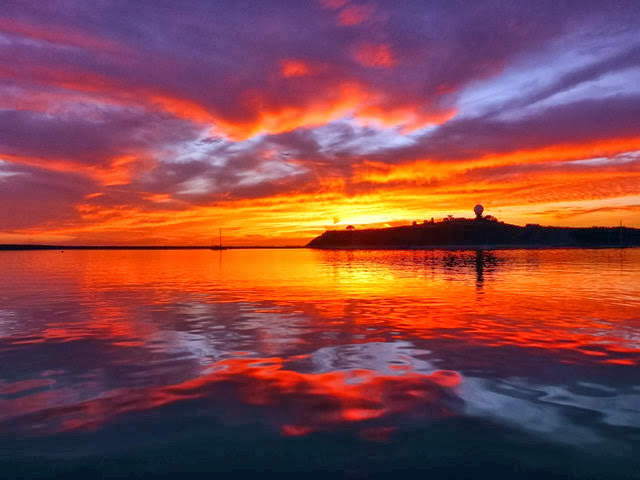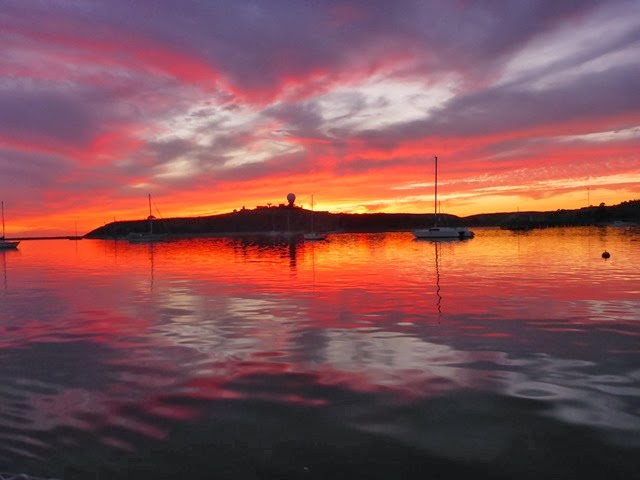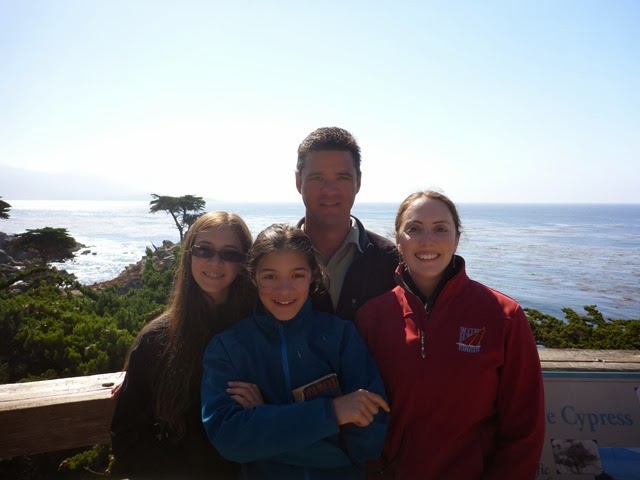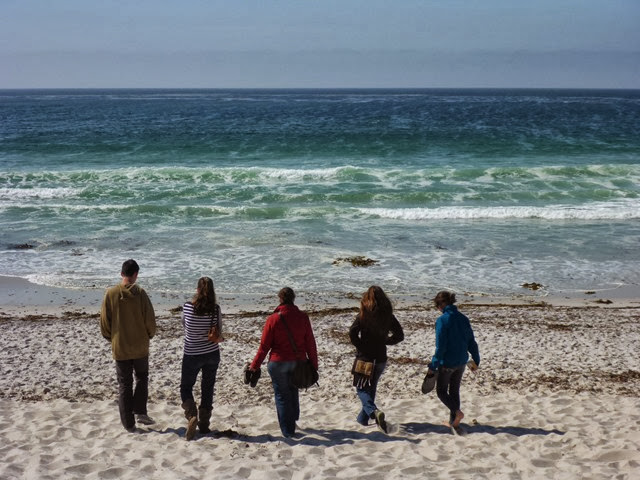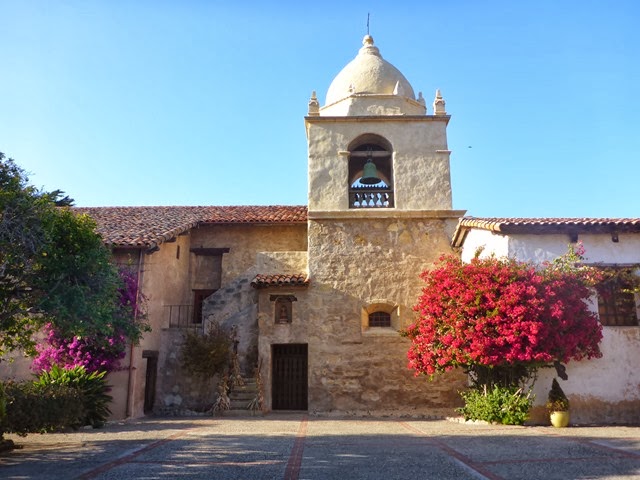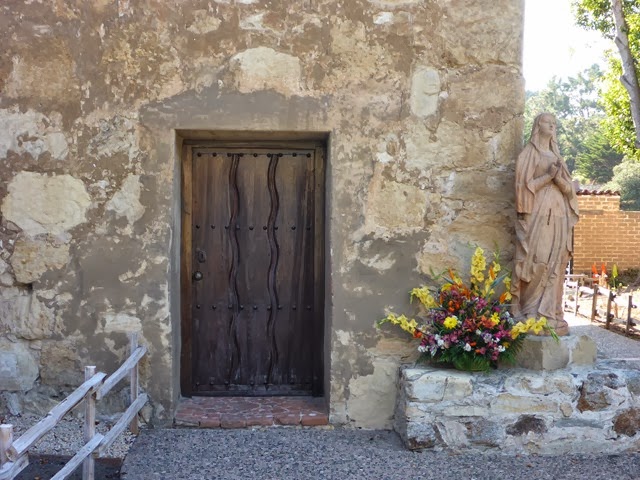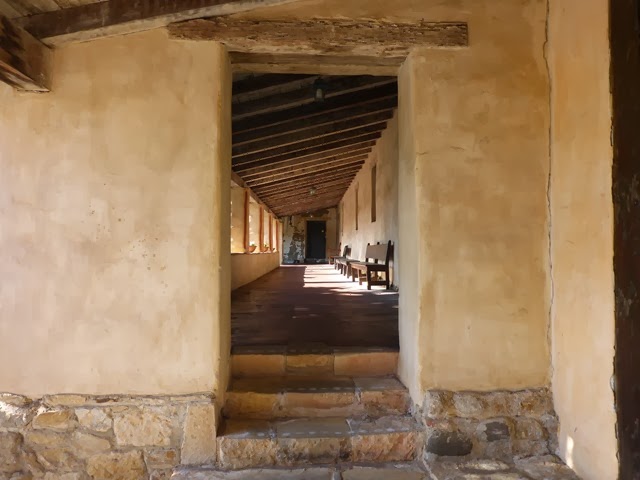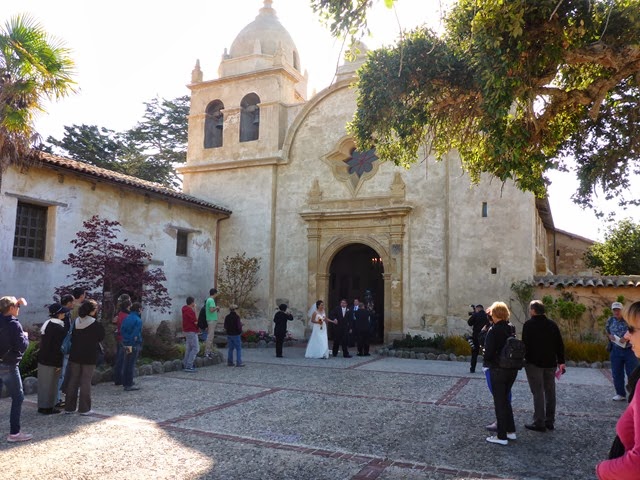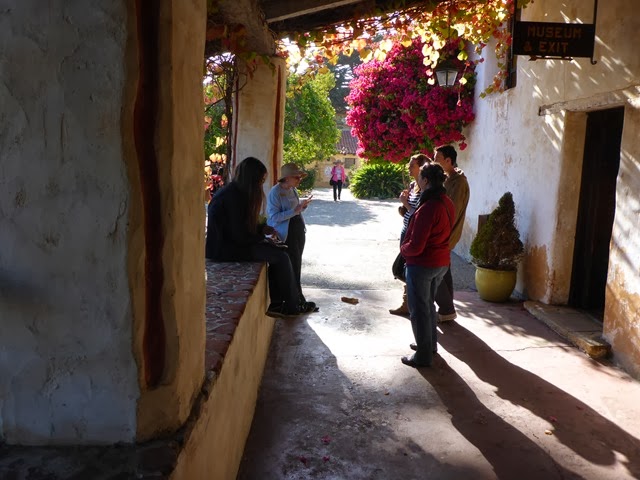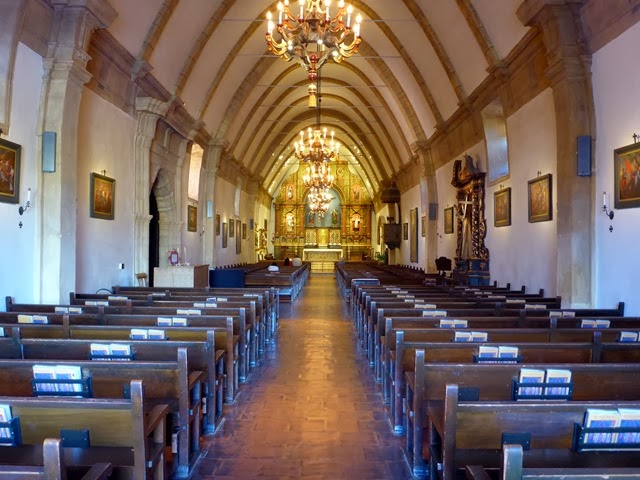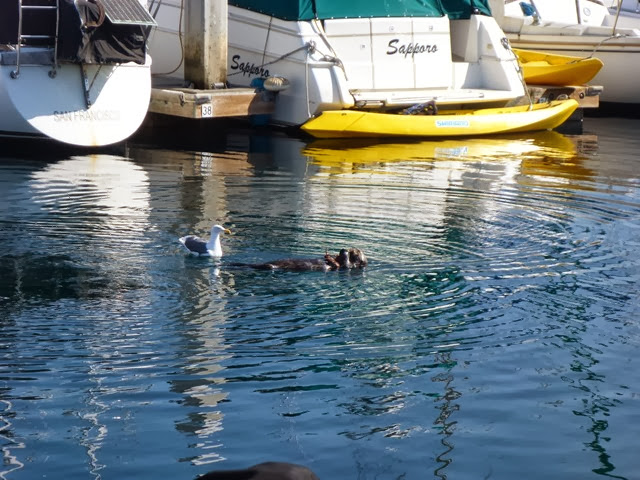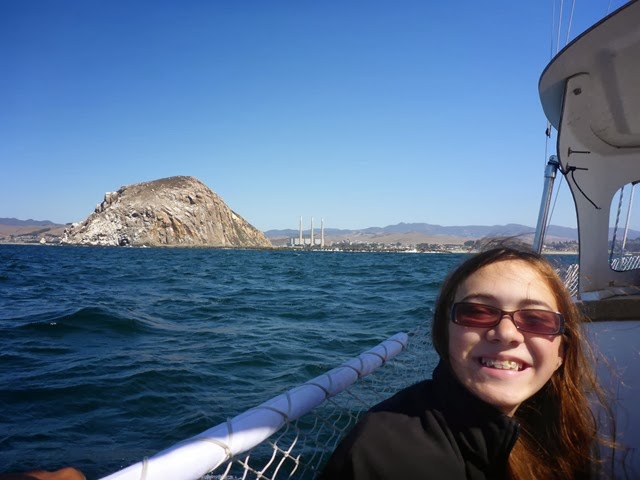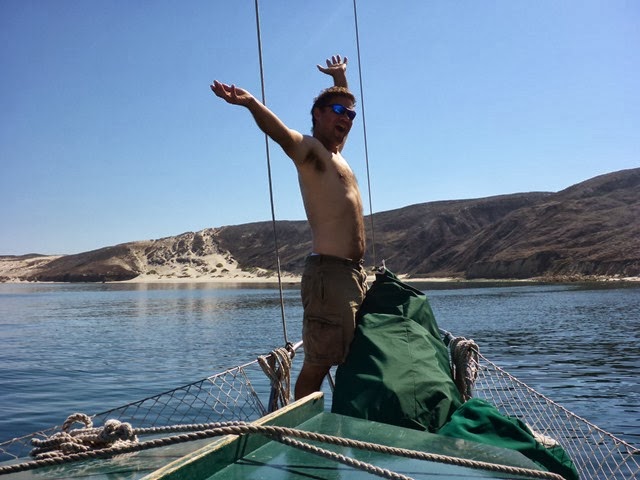I’m writing at an angle, so if my stories seem a bit off, that’s why. We’re heeling over a bit, sailing along from Santa Rosa Island to Santa Cruz Island in light seas and moderate winds and (most importantly) warm weather! But I’m getting ahead of myself.
After our busy days in San Francisco we were happy to sail across the bay for a few quieter days. We sailed away from our anchor and out the tiny entrance of Aquatic Bay and headed across toward Alcatraz and Angel Island beyond. But after a few minutes, the winds eased and the ebb tide current picked up, kicking us west of our goal. We didn’t feel like heading back out to sea and didn’t feel like fighting the current with our engine, so we adjusted our plans and headed into Richardson Bay for the night. We found a spot to anchor in the busy mooring field and settled in for a peaceful evening.
The next morning, Bryan and I rowed to shore, found a spot for the dinghy, and headed off to run a couple of errands. He walked to the local West Marine store, I took a class at the local yoga studio, and we met up at a coffee shop afterward to relax.
Unfortunately, by the time we were back to the boat and ready to leave, the ebb current was running again, so we motored the few miles to a secluded anchorage on Angel Island and took the dinghy to shore for an evening stroll.
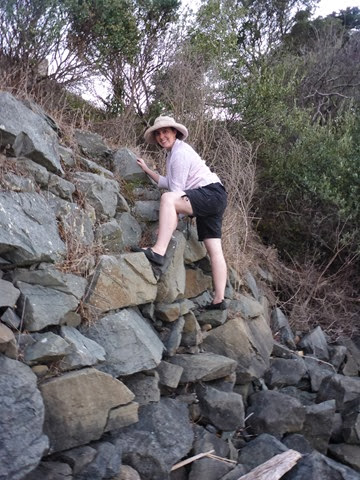 |
| Climbing the wall from the beach to the trails |
We walked up through an old Military fort to the Angel Island Immigration Station.
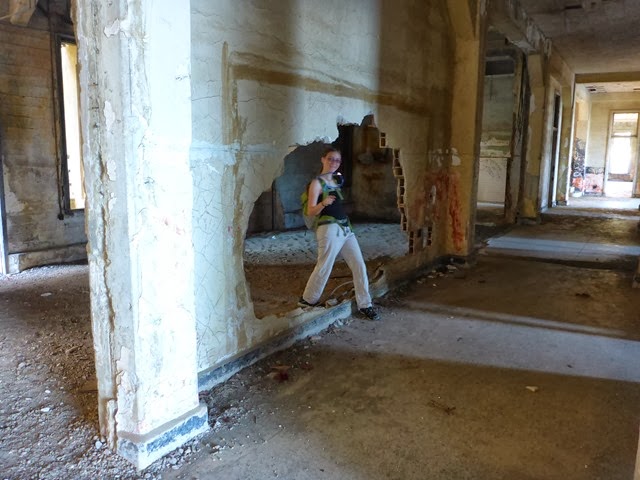 |
| Hannah can walk through walls! |
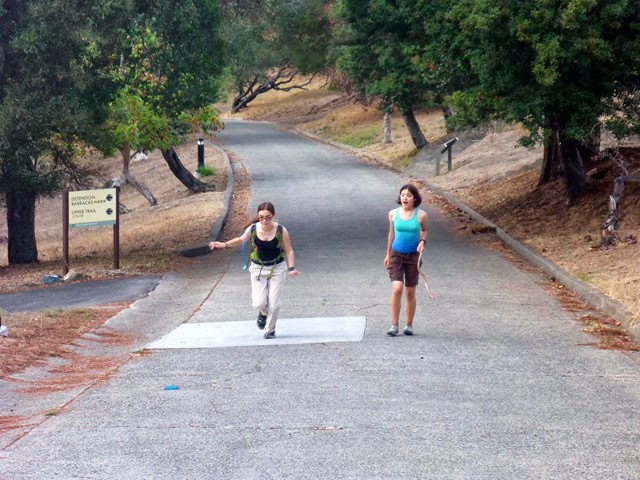 |
| There's always a song or a game on our hikes |
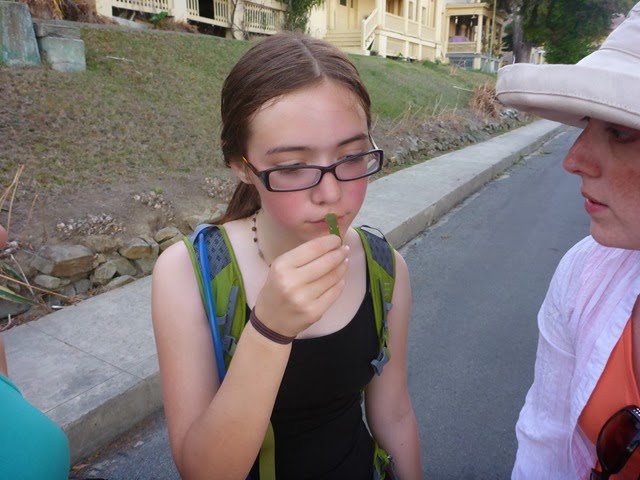 |
| We miss having a local field guide, but guessing is fun too |
Many immigrants were processed through this site, known as the “Ellis Island of the West,” but many hopeful Chinese were kept for weeks, months, or even years before being turned away due to some racist immigration laws in the 1800’s. The site was empty, except for some grazing deer, and we joined the silence, trying in our small way to honor the pain, perseverance, and dreams—fulfilled or not—of those who had come before us.
Our anchorage was open to the busy SF Bay traffic and, though the night was calm, the morning brought wake after rolly wake.
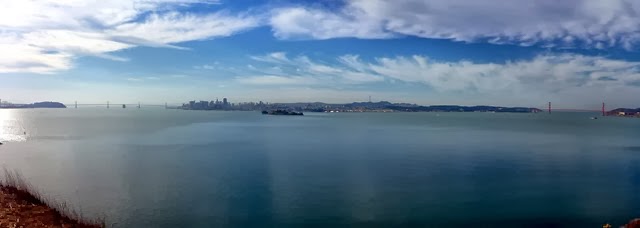
I rowed Bryan to shore for a solitary hike up the hill and spent most of the morning catching and stowing our household goods as they flew across the boat.
By the time Bryan was back from his hike, we were more than ready to be off. We caught the end of the ebb current and motored back out under the bridge and down the coast to Half-Moon Bay, just a few miles south. We came in just at sunset and it was all I could do to tear my eyes away from the view and help navigate into the protected anchorage. I kept looking up from the charts to take “just one more photo” as the sky deepened from pink to orange to red and faded into night.
The next day, we hung out aboard, grateful for a down day to put our little home to rights after the busy days in the Bay. We had arranged to meet a new friend for groceries and laundry, and on Tuesday, he called to say he was waiting at the local yacht club. We rowed across and tied the dinghy up to their floating dock and our friend, Al, floated us over to shore on the yacht club’s little ferry.
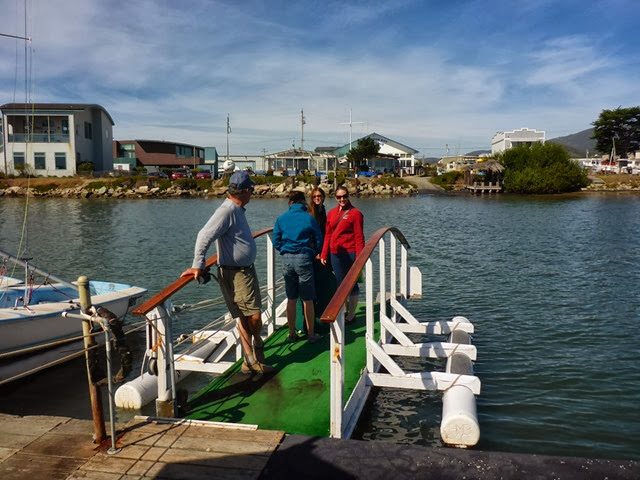
Our independent spirits resist depending on others for our basic needs, but even this early in the trip we have been so blessed by the gifts of friends and relative strangers. As a fellow sailor, Al knew just how to help. Right away, we had laundry running in his washer, audio books downloading on his wireless, and hot water heater churning to keep up with our showers. He let us use his fax machine to take care of business and helped me load up the piles of groceries I bought in anticipation of some time away from civilization. And he shared stories, pictures, guidebooks, and enthusiastic suggestions for our time in Mexico. It’s often more difficult for us to be on the receiving end of this kind of generosity, but he made it clear he was happy to help. Still, we couldn’t thank him enough.
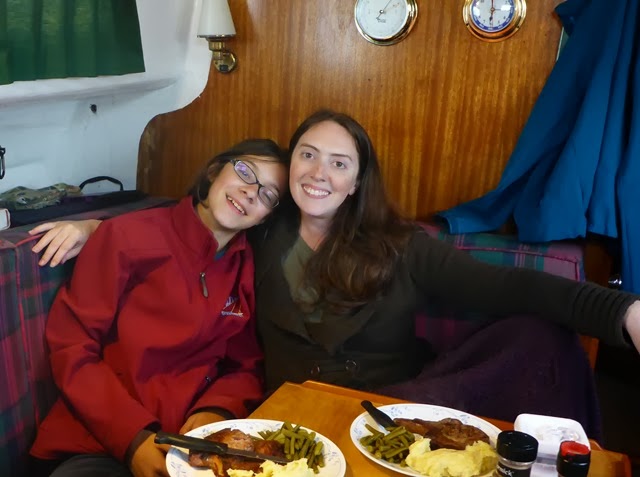 |
| Happy sailors with a post-grocery-run meal |
We spent another day getting everything put away and waiting out some miserable weather. The high swells were predicted to die down around midnight and, as we didn’t have enough daylight to make the trip to Monterey all in one day, we decided to leave just after midnight so we could arrive before dark the next day. Bryan and I went to bed just after dinner and dozed to the companionable sounds of the girls doing the dishes. Around midnight, Bryan got up and got us going. Meira helped him navigate out the entrance and past a couple of shallow reefs before heading off to bed. I got a few more hours of sleep and came on for a pre-dawn watch. It was a slow day motoring to Monterey, with some mild headwinds at times, but we made it in before dark, as planned, and snagged a great slip on the wharf.
Our parents had shipped some things ahead of us to a friend in the Monterey area. Stephanie was more than happy to deliver our packages and had generously offered to take us sightseeing as well. So the next morning, we rushed through showers and breakfast and tidied the boat a bit from our day at sea. (No matter how well prepared we are when we head out, there’s always a mess when we come in. Foulweather gear, wet socks and shoes, half-eaten watch snacks, tea bags and other flotsam litter the cockpit and cabin floor.)
Stephanie and her son, Addison, drove us to Carmel via the winding 17-mile drive, past Pebble Beach Golf Course and along the shore we would be sailing next.
We ate a delicious Mediterranean lunch at a little café in downtown Carmel and poked through several shops before driving over to the Carmel Mission.
There was a wedding in the main chapel at the mission, so we wandered around quietly for a few minutes until the wedding party emerged to the clang of the bells ringing out from the towers above.
We stepped through the small museums, but the captions were hard to read and the history a bit confusing—such a mishmash of stories about the founder, the restoration, and the artwork. Finally we ran into a fabulous docent who told story after story and made the mission history come alive.
The founder had arrived by sea, just like we had, and it was easy to picture how much more difficult his journey had been than ours, with none of the modern technology or conveniences we appreciate.
We spent time walking through the courtyard, the prayer garden, and the chapel and then drove back to the boat (in rush hour traffic—we’d almost forgotten it existed!)
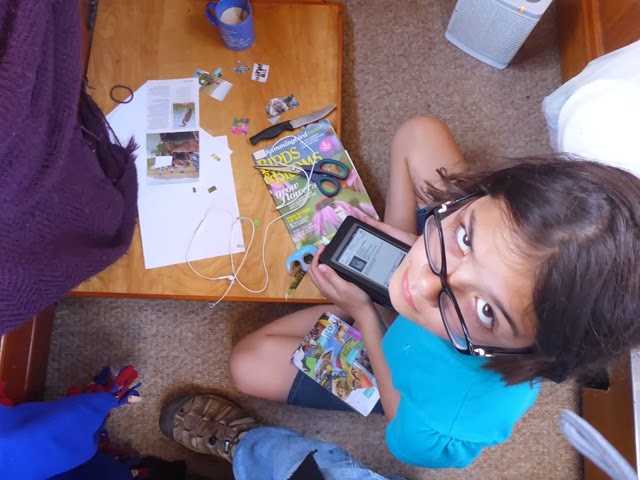 |
| Meira's making a cracker box collage kindle cover |
We woke the next morning to the sound of a marching band playing Yankee Doodle. Soon, a pianist on the wharf began playing old Italian standards. When we started hearing cannon fire too, we were completely bewildered. We spent most of the day doing boat chores while the music and chaos continued. Bryan took advantage of our time at the dock to do some maintenance on the dinghy. (When we’re at anchor, we need the dinghy to get to shore, so we can’t have it out of commission.) We picked up a few things at the nearby Trader Joe’s and walked down Fisherman’s Wharf only to discover that all the restaurants were hosting a clam chowder-tasting in honor of the Italian Festival (that’s one mystery solved.) We weren’t the only ones walking the wharf; several groups of Civil War reinactors joined the fun (that explained the marching band and the cannons.)
The next morning, the competing festivities wound up again (Yankee Doodle went to town, O Solo Mio, BoomBoomBoom), this time with the addition of a group of Zumba dancers whooping over their amplified music at an outdoor animal rescue benefit. The sea lions on the breakwater added to the din and we just shook our heads and got back to work.
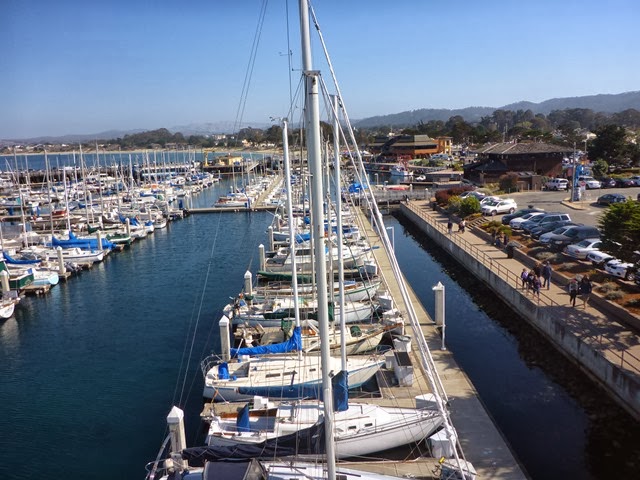 |
| Montery Harbor from 40 feet up |
I spotted Bryan while he climbed the mast to work on our anchor light. Then, while we had easy access to water, we washed the salt spray off the dodger windows and filled the water tanks. I walked to Walgreens (the only one we’ve ever seen that
wasn’t on a corner) and replaced our electric heater. We can only use it when we have shore power, but then—ahhh, what a treat! We picked up a bit more fresh produce from a nearby market, took advantage of the free showers, and stopped to laugh at the otters drifting by our slip.
We knew we had a long couple of days ahead, so when we finished, we all took a few minutes to relax before heading out to sea. The girls hung out soaking up every bit of available screen time and Bryan and I went out for a quick Starbucks date. It was nice to sit in such a familiar setting after all the novelty we’d been experiencing.
We fueled up at the nearby fuel dock and motored slowly past the breakwater covered with silly sea lions out into a setting sun and dying wind.
About 2 the next day, we pulled into Morro Bay for more fuel. The entrance was impressive, with a huge seastack and breaking waves on the jetties.
There was a disabled motor boat just outside the channel and we drove closer and called them on the radio to offer help. They’d already contacted the harbor patrol, however, and a few minutes later, we saw a little runabout splashing out to tow them in. We motored up and back the narrow channel looking for a fuel dock. All we could see was a tall commercial fuel pier, so we found a public dock marked for a 3-hour tie up and…tied up. We walked our fuel cans down to the pier where the attendant was busy fixing the plumbing for the live crab tank at the neighboring fish market. We waited around for a few minutes, but the smells from the market overcame the hungry sailors and we ordered some fish and chips, guarding them closely from the attack seagulls in the area.
We finally got some gas and carried the jugs back to the boat. I was impressed with the way the girls pitched in and traded off carrying one of the heavy tanks without any complaint. We must have been quite the sight, Bryan carrying 2 tanks (“for balance” he always says), the girls trading off with one, and me, rolling the last one bungeed to the frame of our rolling shopping bag. Just after we got back to the dock, the harbor patrol boat stopped by. I expected him to remind us about the 3-hour limit or some other sort of bureaucracy, but he asked if we needed anything and offered to get us a ride to a place to get propane. A few minutes later, a harbor patrol truck pulled up in the parking lot and Bryan and I hopped in with our tank. He gladly drove us to the U-Haul and back saying in response to our profuse thanks, “No problem. It’s what we do.”
The afternoon winds had picked up just as we entered the harbor and, sure enough, by the time we were leaving, they had begun to fade into the evening calm. But we wanted to take advantage of the calm weather to round the infamous Point Conception, so we motored through the night, and by dawn, were south of the point, only a few hours away from our destination and reveling in the sudden summery warmth.
